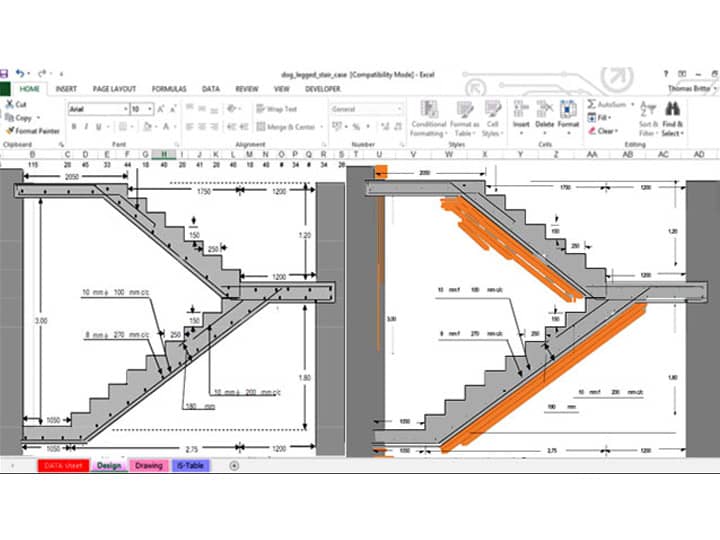When it comes to going up or down a multistoried building, staircases are the inevitable choice. They have been around for thousands of years since the dawn of civilization. Today, we will talk about the design and construction of the dog legged staircases - the most common form of staircases we know.
A staircase provides pedestrian access between various floors of a building. It consists of steps arranged in a rising array, called a flight. Each step has a tread and a riser. The tread is the horizontal part that you place your feet on, and the riser is the vertical difference between two stairs. Each group of steps is called a flight. A staircase generally has one, two or four flights between each floor - more than that is generally not preferred.
The most common type of staircase is the dog legged staircase, because it is the most economical, in terms of both construction cost and space occupied. This is because the staircase is arranged in two flights side by side, divided by a landing in the midsection. This is a very compact design requiring very little space and has a room-like footprint, thus allowing it to be designed in most positions in the building. The landing provides a bit of a resting area and wall opening opportunity.
Designing a dog legged staircase
Design solution:
For residential buildings, the rise of each stair is kept at 150 mm, and the tread is kept at 225 mm.
Therefore, the dimensions of the stair hall can be calculated in the following way:
There are two flights to cover a total rise of 3.3 meters. So,
Now, we have to cross this amount of flight using 150 mm high steps. So,
We have a 2.5 meter space to build our staircase. So,
That's the effective width of each stair.
Along the flight, the steps will take up total length = 225 x 10 / 100 = 2.25 meters. Since the provided area was 4.5 meters long, we still have 2.5 meter area left. This will go into providing the landing spaces, of which there are two. So,
There you go, calculations are done for your dog legged staircase, now just draw it up!
